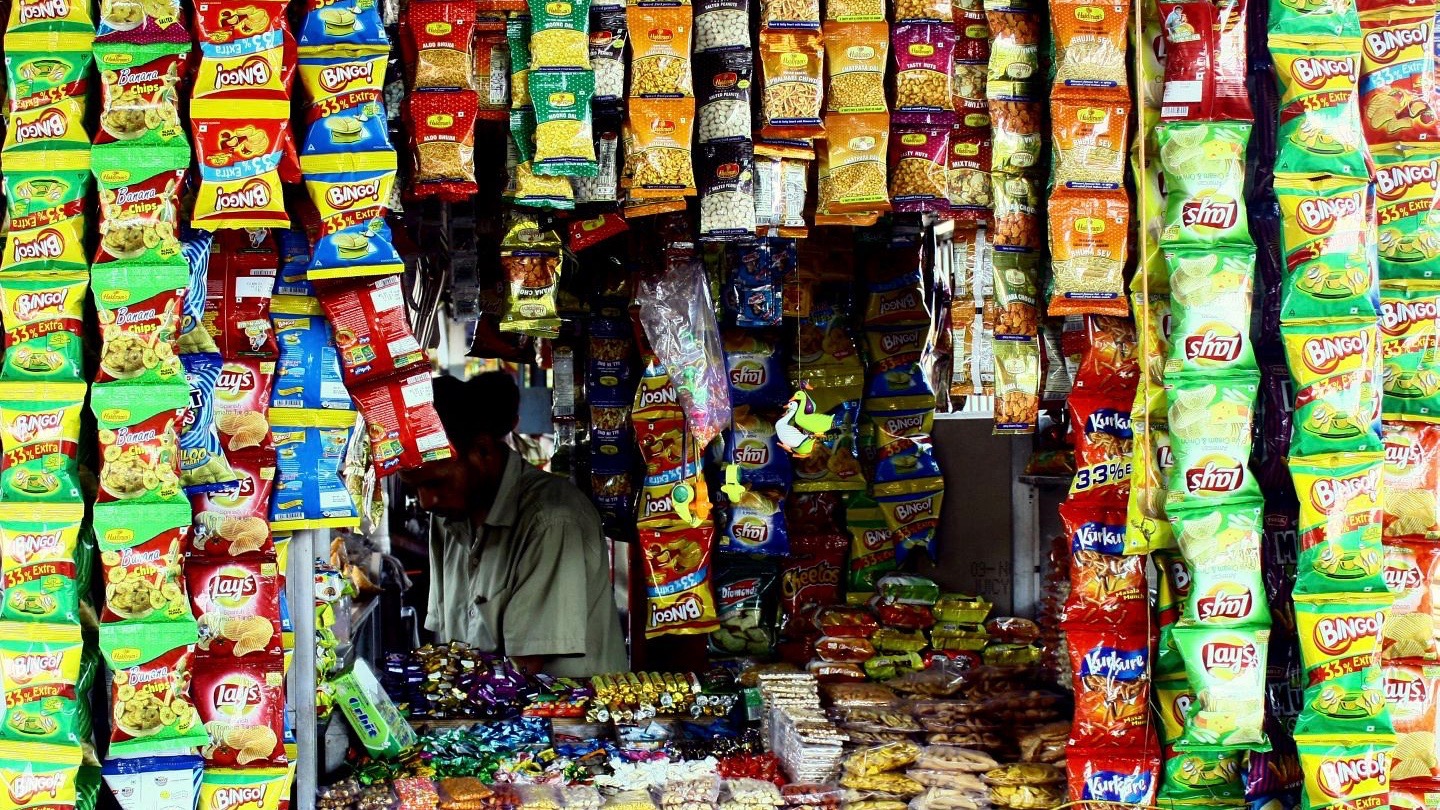The burden of non-communicable diseases (NCDs) in India is unrelenting. Since 1990, there has been a 23% increase in death cases caused by NCDs. Over 11% of the population has diabetes, and another 15% are in a prediabetic condition. When looking at hypertension and obesity data, the prevalence is even worse at 35% and 28%, respectively. While tackling NCDs has been high on the global public health policy agenda, at least formally, little is being done to address the commercial factors that impact their growth.
India is struggling with the same problem, as shown in “The Junk Push,” a report on the consumption of ultra-processed foods published by the Nutrition Advocacy in Public Interest (NAPi) and the Breastfeeding Promotion Network of India (BPNI). The report looks at how aggressive marketing strategies are influencing people to consume more ultra-processed food (UPF), colloquially known as junk food, and therefore undermining the health of thousands of people.
Arun Gupta, one of the report’s authors and a pediatrician by training, explained during a conversation with the People’s Health Dispatch that they compared the amount of salt, sugar, and fat in 43 products that are heavily advertised with thresholds defined by the World Health Organization (WHO). All the products they selected had a high content of at least one. Many, as Gupta points out, were high in all three.
The rapid increase in the consumption of such food should be a cause for concern and action at the policy level. According to Gupta, the main thing to address should be the aggressive marketing used by the industry. As the report shows, UPF producers do not shy away from resorting to emotional appeals when marketing their products, often depicting smiling children and parents, or idyllic scenes of middle-class family life, to reach consumers.
Children are not only depicted as lead characters in the commercials but are also a particular target group for the industry. When the producers of UPF are allowed to shape eating habits at a very young age by using packaging that depicts cartoon characters or other visuals that attract children, they automatically shape the eating habits of adults as those children grow. This is becoming easier as the producers make UPF accessible to everyone, regardless of age, education, or income level. Small packages of salted or sweetened snacks priced as low as Rs.10 (0.10 USD) can be purchased by a significant portion of the population, even in rural areas.
Read more: Obesity pandemic at the World Health Assembly: when the unhinged market feeds disease
That marketing strategies can have a massive impact on how much UPF people will buy, and that governments can act in the interest of public health by regulating those marketing practices, has been proven in dozens of cases. In the case of India itself, an effort to regulate the marketing of commercial milk formula in the 1990s and early 2000s, despite the fact that the industry still manages to find alternative ways to advertise its products to parents and health workers, meant that the situation is now significantly better compared to that in countries like China, which staggered with introducing stricter regulations until as late as 2021.
Because we already know it works, stricter regulation of marketing is a priority for Gupta. “Once you define a product as unhealthy, there should be no reason for a government to allow it to be advertised.”
Little doubt remains that UPF is, in fact, unhealthy. As indicated by recent research, not only does junk food affect cardiovascular health and obesity rates, but it is also addictive: growing numbers of both children and adults are already addicted to UPF. Yet, action to treat and prevent that is still largely absent. Apart from a handful of countries that introduced nutrition guidelines clearly opposing corporate interests, most governments in the world remain exposed to corporate influence. In some cases, this takes the form of the food industry downplaying the harmful effects of UPF, like the tobacco industry did in its time.
In others, it simply means that UPF is cheaper and more convenient in the short run, a factor that cannot be overlooked as the price of essential goods around the world continues to skyrocket. A recent article published in the British Medical Journal points out that those “facing food insecurity are more reliant on ultra-processed foods to meet their daily energy needs” than others, and making real, minimally processed food options available should be part of a comprehensive food policy, along with clear front-of-package warning labels and higher taxes on junk food.
Read more: Tackling malnutrition in an era of political uncertainty: the case of Brazil
Yet, ensuring that real food is more affordable than UPF while current marketing strategies remain unaddressed will probably not be enough to turn the tables around. Policies that aim to protect people’s health by supporting proper food habits should, according to the authors of the BMJ article, also limit “industry practices that inequitably promote UPF to disadvantaged communities.”
As Gupta points out, the thing with India’s National Multisectoral Action Plan for Prevention and Control of Common NCDs 2017-2022 is that it already recognizes the need for action on all these points, which “The Junk Push” repeats once again in its recommendations. “It says [stricter] regulation, limits to advertisements. It says [introduce] interpretive warnings. It says increase access to healthy foods,” he stresses. Simply by taking more decisive steps to follow the plans that have already been put on paper, there could be clear progress for public health.
People’s Health Dispatch is a fortnightly bulletin published by the People’s Health Movement and Peoples Dispatch. For more articles and to subscribe to People’s Health Dispatch, click here.





